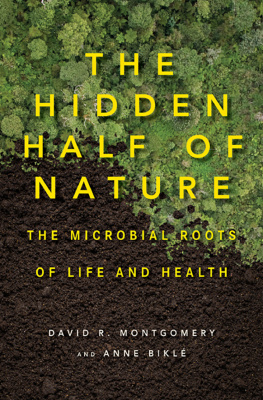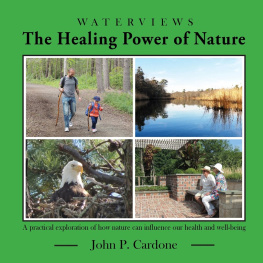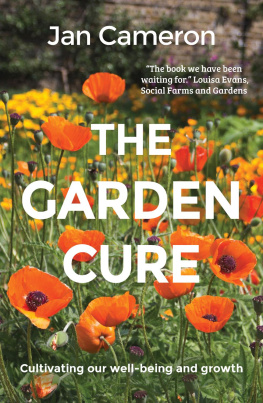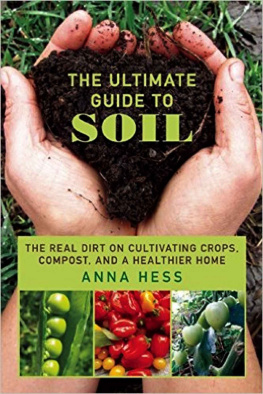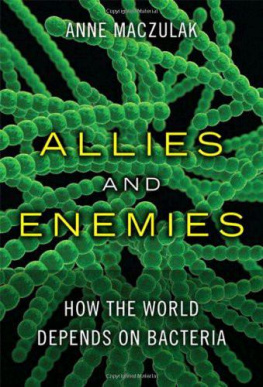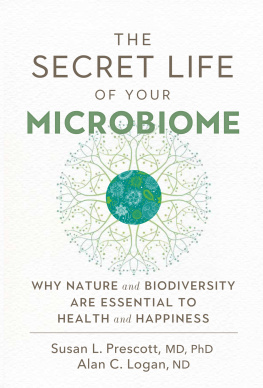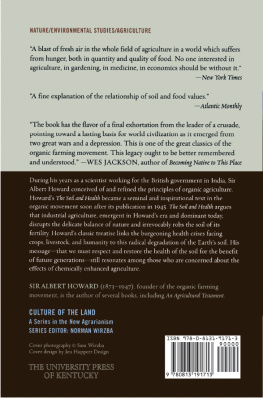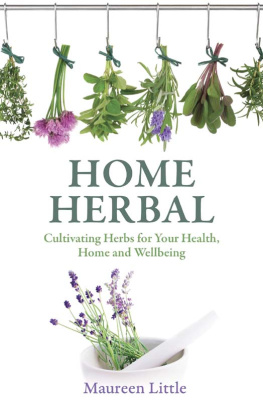
Also by David R. Montgomery
The Rocks Dont Lie: A Geologist Investigates Noahs Flood
Dirt: The Erosion of Civilizations
King of Fish: The Thousand-Year Run of Salmon
Further advance praise for The Hidden Half of Nature
A stunningly clever book that connects the tiny dots of the microbial world. I will never ignore my microbes again.
Kirk Johnson, Sant Director,
Smithsonian National Museum of Natural History
I love this book! Its genial, erudite, and wise. Using their personal story, historical fact, and cutting-edge science, Montgomery and Bikl have given us a great gifta deep understanding and appreciation of our relationship with the microbial world. Seeing this invisible world in an entirely new way, as allies, we can reclaim the health of our bodies, soil, and world. Its exciting, absolutely necessary, and, now that I have digested this wonderful work, I believe totally possible.
Deborah Koons Garcia, filmmaker,
The Future of Food and Symphony of the Soil
Microbes and soil. Microbes and humans. With a full sweep of knowledge, Montgomery and Bikl help heal the split in the ancient subject-object dualism.
Wes Jackson, founder and president of the Land Institute
In a fascinating narrative explaining the economics and theatrics of microbes, Montgomery and Bikl bring the unseen world to life like great storytellers.
Joel Salatin, Polyface Farm
A much-needed microbial manifesto that unearths the mysteries and wonder of microbes and the intimate links among the health of the soil, the planet, and our personal health.
Kathie Madonna Swift, nutritionist and author of The Swift Diet
A wonderful read! The Hidden Half of Nature not only explores the workings of the microbial world, but also the people and the methods used to advance our knowledge of it.
Jeff Lowenfels, author of the Teaming With series
What a friendly and highly readable excursion. Through personal experiences and lively historical vignettes, the authors lead us on a delightful journey to discover why microbes are essential for the health of all life formsincluding us.
Moselio Schaechter, San Diego State University and
University of California at San Diego
This is a very timely book. Environmentalists and the public focus on and respond to megafaunathe big charismatic creatures from elephants and tigers to whooping cranes and monarch butterflies. But we forget that for most of this time that life has occupied Earth, its been a microbial world.
David Suzuki, host of CBCs The Nature of Things
THE HIDDEN
HALF OF NATURE
The Microbial Roots of Life and Health
DAVID R. MONTGOMERY
AND ANNE BIKL

W. W. Norton & Company
Independent Publishers Since 1923
New York London
Copyright 2016 by David R. Montgomery and Anne Bikl
All rights reserved
First Edition
For information about permission to reproduce selections from this book,
write to Permissions, W. W. Norton & Company, Inc.,
500 Fifth Avenue, New York, NY 10110
For information about special discounts for bulk purchases, please contact
W. W. Norton Special Sales at specialsales@wwnorton.com or 800-233-4830
Book design by Kristen Bearse
Production manager: Julia Druskin
ISBN: 978-0-393-24440-3
ISBN 978-0-393-24441-0 (e-book)
W. W. Norton & Company, Inc.
500 Fifth Avenue, New York, N.Y. 10110
www.wwnorton.com
W. W. Norton & Company Ltd.
Castle House, 75/76 Wells Street, London W1T 3QT
E pluribus unum
Out of many, one.
We are living through a scientific revolution as illuminating as the discovery that Earth orbits the Sun. Yet the current revolution does not focus on massive planetary bodies, but on life too small to see with the naked eye. An explosion of discoveries is rapidly unfolding about the life below ground, within us, and literally everywhere on the planet. What scientists are finding is that the world we know is built upon a world we have mostly overlooked.
Throughout history, naturalists relied on their unaided eyes, ears, and hands to uncover natures secrets. But our senses handicap us when it comes to her hidden half, leaving the microscopic world shrouded in mystery. Only recently have new gene-sequencing technologies and more powerful microscopes given us a window into this world. Scientists are now seeing that complex microbial communities drive many things we depend upon, from soil fertility to a healthy immune system.
Our curiosity about the foundational importance of microbial ecology arose in the unlikeliest of wayson a stay-at-home journey to our backyard. Both Anne and I had been trained to observe and notice nature. I through my study of the geological forces that have shaped Earths landscapes over immense periods of time, and Anne in her work as a biologist and an environmental planner in the field of public health.
So when we bought a house, began to dig into the soil of our new yard, and discovered we had fixer-upper dirt, our professional training kicked into gear. At the front of our minds was figuring out how our lousy soil would ever support a garden. Anne acted first, by following her gut and feeding organic matter to our lifeless soil. A lot of organic matter. Ton after ton of coffee grounds, wood chips, leaves, and home-brewed compost tea disappeared into the ground. Lo and behold, in what seemed like no time at all, the plants in our new garden began to thrive and grow like mad.
I didnt see how something as dead and unappealing as the organic matter Anne added to our soil could so rapidly spawn a blossoming of life. It was this simple mystery that launched us both on a mission of discovery. As we soon learned, microscopic soil life chewed and chomped its way through the organic matter, turning it into a smorgasbord of nutrients for our emerging plants. The idea of another world run by tiny, invisible, and largely unknown creatures fascinated us. Yet their undeniable effect rippled upward from beneath our feet. In less than a decade our yard went from a barren lot to a garden teeming with life.
Watching the amazing impact of our renewed soil showed us a solution for one of the oldest problems plaguing humanityhow to grow food without depleting or destroying the soil. The experiment unfolding outside our back door confirmed the pioneering insights of early organic farmers and gardeners. By nurturing the microbial life below ground, we can reverse much of the damage caused by the ancient practice of plowing and the modern overuse of pesticides and fertilizers. But our journey didnt stop there. We found that the life of the soil is only part of the hidden half of nature.
When Anne was diagnosed with cancer, it led us to question the notion of health itself. Where does it come from? This was when our view of the microbial life within us began to change. At first we shared the conventional medical view that sees microbes mostly as pathogens. We had both experienced the power of modern medicine to combat infections and were thankful for the antibiotics that had saved our lives. But it is not only the bad actors of the microbial world that influence our health.
The latest revelations about microorganisms show that we are not who we thought we were. This was brought into sharp relief a few years ago when a large consortium of scientists reported their findings in the journals Science and Nature. An unfathomably vast array of invisible lifebacteria, protists, archaea, and fungithrives on us and in us, as do innumerable viruses (which are not considered alive). Their cells outnumber our own cells by at least three to one, and many say ten to one, yet we are only beginning to learn what they do for us. And our planetlike the bodies of plants, animals, and peopleis literally covered, inside and out, with microorganisms. Not only are they abundant, theyre robust, able to withstand the most extreme conditions the planet can offer. To help you navigate the exciting world of microbes, weve included a glossary, a few endnotes, and an extensive list of sources for those who may wish to delve deeper.
Next page
